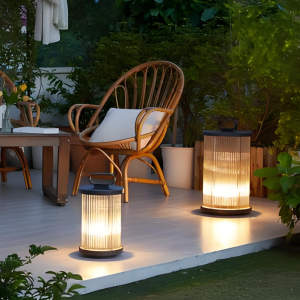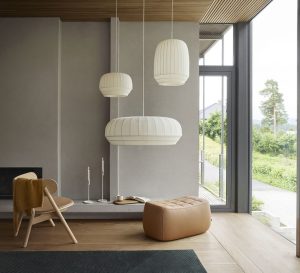
Brighten Up Your Kitchen with the Right Lighting
Proper kitchen lighting is essential for creating a functional and inviting space. The right lighting can improve visibility, enhance safety, and create a pleasant ambiance in the kitchen. Whether you are cooking, entertaining, or simply spending time with your family, having the right lighting can make all the difference. In this article, we will explore the importance of proper kitchen lighting and provide tips and ideas for creating a lighting plan that meets your specific needs and preferences.
Importance of Proper Kitchen Lighting
Having proper kitchen lighting is crucial for several reasons. First and foremost, it improves visibility in the space, making it easier to perform tasks such as chopping vegetables or reading recipes. Good lighting also enhances safety by reducing the risk of accidents and injuries. For example, having adequate task lighting over the stove and countertops can help prevent burns and cuts.
In addition to functionality, proper kitchen lighting can also contribute to energy efficiency. By using energy-efficient light bulbs and fixtures, you can reduce your energy consumption and lower your electricity bills. LED bulbs, for instance, are known for their long lifespan and low energy consumption.
Types of Lighting for Your Kitchen
There are three main types of lighting that can be used in a kitchen: ambient, task, and accent lighting.
Ambient lighting provides overall illumination in the space. It is usually achieved through ceiling-mounted fixtures such as recessed lights or flush-mount fixtures. Ambient lighting should be bright enough to provide general illumination but not too harsh or glaring.
Task lighting is focused on specific areas where tasks are performed, such as over the sink, stove, or countertops. It should be bright enough to provide adequate visibility for tasks but not too harsh or shadowy. Task lighting can be achieved through under-cabinet lights, pendant lights, or track lighting.
Accent lighting is used to highlight specific features or objects in the kitchen, such as artwork, cabinets, or countertops. It adds depth and visual interest to the space. Accent lighting can be achieved through spotlights, track lighting, or LED strip lights.
Choosing the Right Light Bulbs for Your Kitchen
When choosing light bulbs slylamps for your kitchen, there are several factors to consider, including brightness, color temperature, and energy efficiency.
Brightness is measured in lumens. The higher the lumens, the brighter the light. For task lighting, it is recommended to choose bulbs with a higher lumen output to ensure adequate visibility. For ambient and accent lighting, you can choose bulbs with a lower lumen output for a softer and more relaxed ambiance.
Color temperature refers to the warmth or coolness of the light. It is measured in Kelvin (K). Bulbs with a lower Kelvin value (2700K-3000K) emit warm white light, which is ideal for creating a cozy and inviting ambiance. Bulbs with a higher Kelvin value (4000K-5000K) emit cool white light, which is ideal for task lighting as it provides better visibility and color accuracy.
Energy efficiency is an important consideration when choosing light bulbs. LED bulbs are the most energy-efficient option as they consume less energy and have a longer lifespan compared to traditional incandescent or fluorescent bulbs. They may be more expensive upfront but will save you money in the long run.
Tips for Creating a Functional Kitchen Lighting Plan
Creating a functional kitchen lighting plan involves considering the size and layout of your kitchen, as well as the activities that take place in it. Here are some tips to help you create a lighting plan that meets your specific needs:
1. Assess your needs: Consider how you use your kitchen and what activities take place in it. Do you do a lot of cooking? Do you entertain frequently? Understanding your needs will help you determine the type and placement of lighting fixtures.
2. Layer your lighting: Use a combination of ambient, task, and accent lighting to create a layered lighting effect. This will provide both overall illumination and focused lighting where it is needed.
3. Consider the size and layout of your kitchen: In a small kitchen, you may need fewer fixtures, while in a larger kitchen, you may need more. Consider the placement of cabinets, appliances, and furniture when determining the placement of lighting fixtures.
4. Use dimmers: Installing dimmer switches allows you to adjust the brightness of your lights according to your needs and preferences. Dimmers are especially useful in the kitchen as they can create a more relaxed ambiance during meal times or parties.
5. Don’t forget about natural light: Maximize natural light in your kitchen by using light-colored paint and window treatments. Position furniture and appliances to allow for natural light to flow in.
Incorporating Task Lighting into Your Kitchen Design

Task lighting is essential for performing specific tasks in the kitchen, such as chopping vegetables or reading recipes. Here are some examples of where task lighting can be used:
1. Over the sink: Install a pendant light or a recessed light above the sink to provide adequate lighting for washing dishes or preparing food.
2. Over the stove: Install a range hood with built-in task lighting to provide bright and focused lighting for cooking.
3. Under-cabinet lighting: Install LED strip lights or puck lights under the cabinets to illuminate the countertops and provide task lighting for food preparation.
4. Above the countertops: Install recessed lights or track lighting above the countertops to provide focused lighting for tasks such as chopping vegetables or kneading dough.
Adding Accent Lighting to Highlight Your Kitchen’s Features
Accent lighting can be used to highlight specific features or objects in your kitchen, adding depth and visual interest to the space. Here are some examples of how accent lighting can be used:
1. Above cabinets: Install LED strip lights on top of cabinets to create a warm and inviting glow.
2. Inside cabinets: Install LED strip lights inside glass-front cabinets to showcase your dishes or glassware.
3. Above artwork: Install picture lights or track lighting above artwork or a gallery wall to draw attention to them.
4. Under the island: Install LED strip lights under the kitchen island to create a floating effect and add visual interest.
Maximizing Natural Light in Your Kitchen
Natural light can make a significant difference in the look and feel of your kitchen. Here are some tips on how to maximize natural light in your space:
1. Use light-colored paint: Light-colored walls and cabinets reflect more light, making the space feel brighter and more open.
2. Use sheer window treatments: Opt for sheer curtains or blinds that allow natural light to filter through while still providing privacy.
3. Position furniture and appliances strategically: Avoid placing tall furniture or appliances near windows that could block natural light from entering the space.
4. Use mirrors: Hang mirrors on walls opposite windows to reflect natural light and make the space feel larger.
Creative Lighting Ideas for Your Kitchen
In addition to the basic types of lighting, there are many creative lighting ideas that can add personality and style to your kitchen. Here are a few ideas to consider:
1. Pendant lights: Hang pendant lights above the kitchen island or dining table to create a focal point and add visual interest.
2. Chandeliers: Install a chandelier above the dining table or in the center of the kitchen to create a dramatic and elegant look.
3. Under-cabinet lighting: Install LED strip lights or puck lights under the cabinets to create a warm and inviting glow.
4. Toe-kick lighting: Install LED strip lights along the bottom of base cabinets to create a soft and subtle glow.
How to Install Kitchen Lighting Fixtures
Installing kitchen lighting fixtures may seem daunting, but with the right tools and instructions, it can be a straightforward process. Here is a step-by-step guide on how to install different types of kitchen lighting fixtures:
1. Recessed lights: Turn off the power to the circuit you will be working on. Use a hole saw to cut a hole in the ceiling for the recessed light fixture. Connect the wiring according to the manufacturer’s instructions and secure the fixture in place.
2. Track lighting: Turn off the power to the circuit you will be working on. Install the track according to the manufacturer’s instructions, making sure it is level. Attach the track heads and connect the wiring.
3. Pendant lights: Turn off the power to the circuit you will be working on. Install a ceiling box or canopy for each pendant light. Connect the wiring according to the manufacturer’s instructions and hang the pendant lights.
Maintaining Your Kitchen Lighting for Optimal Performance
To ensure optimal performance and longevity of your kitchen lighting fixtures, regular maintenance is essential. Here are some tips on how to maintain your kitchen lighting:
1. Clean regularly: Dust and clean your lighting fixtures regularly to prevent dirt and grime from building up. Use a soft cloth or duster to wipe down the fixtures.
2. Replace bulbs as needed: Keep track of when your bulbs need to be replaced and replace them promptly. Burnt-out bulbs can affect the overall brightness and functionality of your lighting.
3. Check for loose connections: Periodically check for loose connections in your wiring and tighten them if necessary. Loose connections can cause flickering or dimming of lights.
4. Inspect for damage: Regularly inspect your lighting fixtures for any signs of damage, such as cracks or exposed wires. If you notice any damage, repair or replace the fixture as needed.
Proper kitchen lighting is essential for creating a functional and inviting space. It improves visibility, enhances safety, and contributes to energy efficiency. By understanding the different types of lighting and how to choose the right light bulbs, you can create a lighting plan that meets your specific needs and preferences. Incorporating task lighting and accent lighting can further enhance the functionality and ambiance of your kitchen. By maximizing natural light and adding creative lighting fixtures, you can personalize your space and make it truly unique. Regular maintenance of your kitchen lighting fixtures will ensure optimal performance and longevity. So, take the time to assess your needs, plan your lighting layout, and create a kitchen that is both functional and beautiful.


